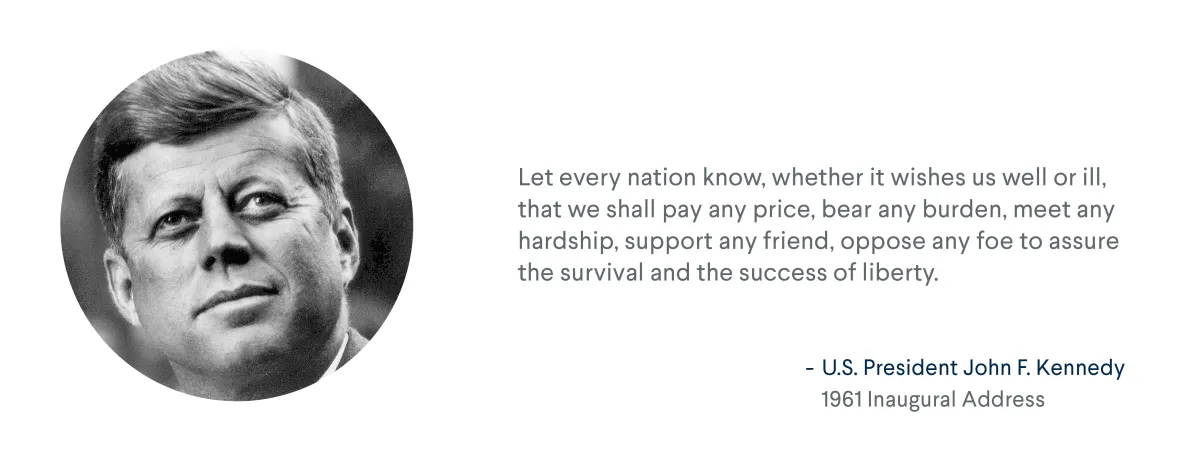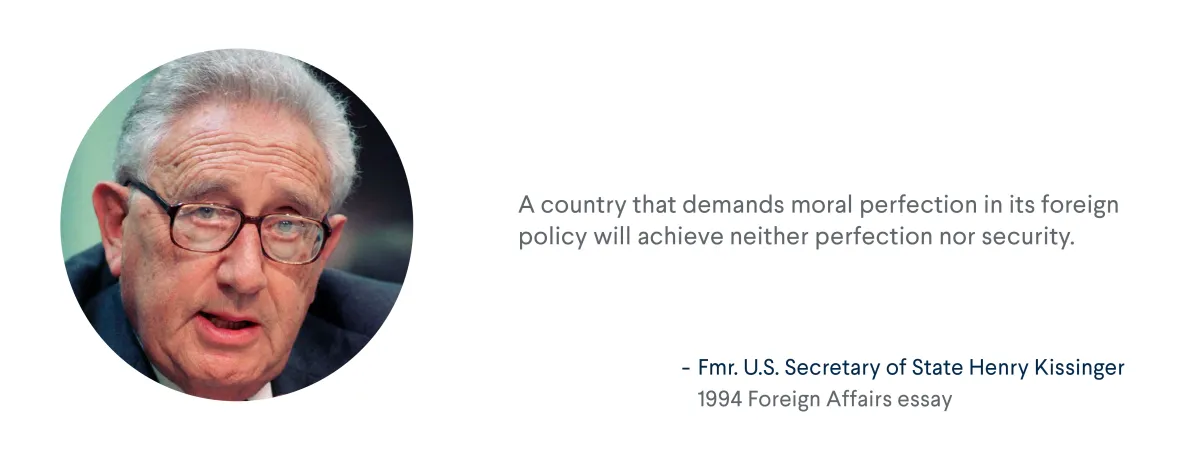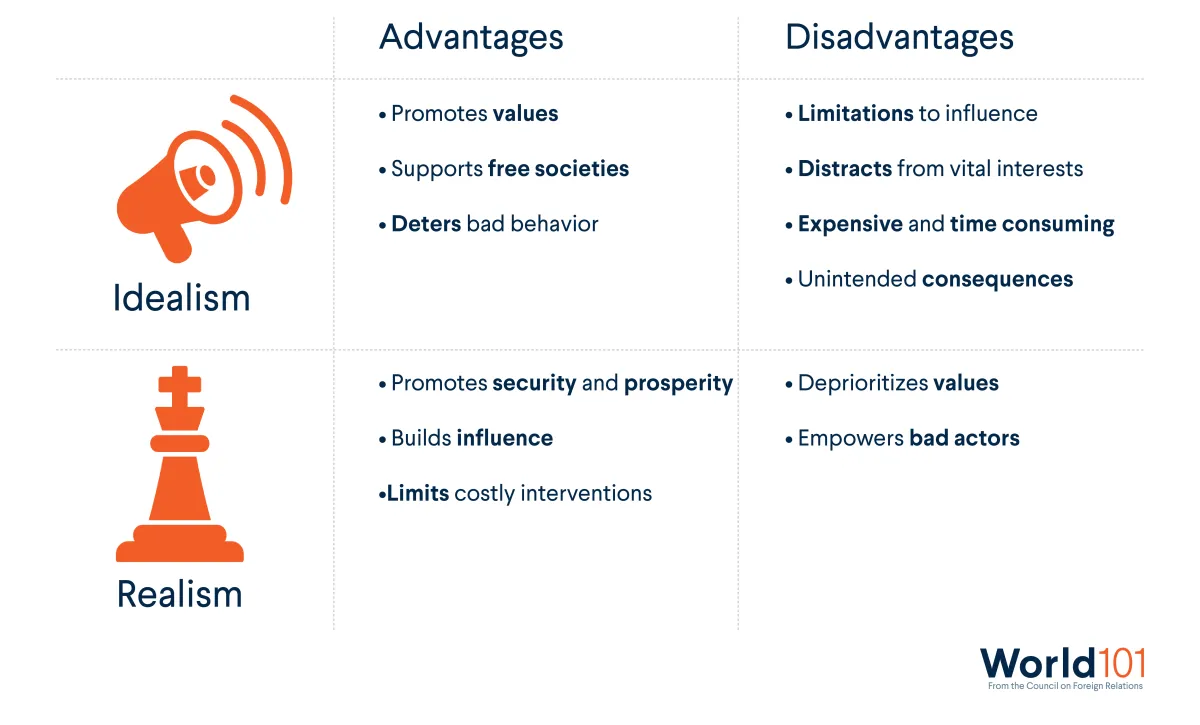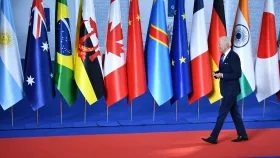Idealism Versus Realism
What is idealism? What is realism? In this free resource, explore two schools of thought on a country’s foreign policy priorities.
Teaching Resources—Approaches to Foreign Policy: Introduction (including lesson plan with slides)
Higher Education Discussion Guide
Imagine for a moment that you’re president of the United States. One morning, you receive troubling news of government oppression in a foreign country. This country happens to be a close U.S. economic and security partner.
How do you respond?
Two advisors present you with options. One of them recommends that you punish the foreign government. This advisor argues that the United States should prioritize supporting those who are fighting for human rights and freedom around the world. The other encourages you not to intervene. This advisor argues that preserving your relationship with the foreign government, which encompasses billions of dollars in trade and a security partnership that has yielded regional stability for years, is more important.
Those options reflect two schools of thought in foreign policy: idealism and realism.
What is idealism?
Idealism contends that a country’s foreign policy should reflect its internal values. In other words, if a government attempts to reduce poverty, defend human rights, or promote religious freedom at home because it believes those positions to be just or moral, then it should strive to do the same abroad. To idealists, that would lead to a more peaceful world in the long term.
What is realism?
Realism, on the other hand, approaches foreign policy from the perspective of interests as opposed to values. This means realists focus less on another country’s domestic policy and more on its foreign policy. In practice, realists prioritize their core interests like security and prosperity in their relationships with foreign countries. Realists tend to focus less on what those governments do within their borders.
Idealism vs. realism
Neither approach is inherently right or wrong. Similarly, neither approach belongs exclusively to one political party. Some administrations trend more toward idealism. Meanwhile others lean more toward realism. All foreign policy combines elements of both realism and idealism; the real debate is over the degree to which a country emphasizes each approach.
Idealists believe in actively participating in global affairs to share the values they hold dear and shaping countries to reflect those values. That approach can entail cooperating with others or acting solo to address what idealists see as the world’s greatest problems. Note, however, that idealism is not the same as pacifism. Idealists can spread their beliefs around the world forcefully, pressuring or even invading other countries.
Realists, meanwhile, don’t necessarily deny the importance of human rights or democratic governance. Rather, they just believe that the way to achieve peace and prosperity is by influencing how other countries interact with the world instead of trying to change those countries’ internal affairs. Rather than focusing on every humanitarian crisis, realists build power and influence to mold the world in their vision. Realist ends are achieved by forming strong alliances, developing military capabilities, or weakening rivals. Realists believe sharing one’s values abroad often has unintended consequences that can destabilize countries and regions.
Both idealism and realism have drawbacks
Countries only have so much power to influence other governments’ actions. Even if idealists hope to influence other countries’ policies—for example, if the United States wishes to see democracy flourish in China or Russia—foreign countries can do little on a practical level to manipulate another country’s politics. Additionally, strictly prioritizing values can distract from other core interests. For instance, to compete with China and balance its power, the United States works with non-democracies in Asia such as Vietnam. The United States also works with non-democracies to address various global issues including climate change, refugee crises, and pandemics. What’s more, too much idealism—even with the best intentions—can yield disastrous results. For example, the United States invaded Iraq in 2003, in part because it believed it could change the country into a democracy. Washington hoped that a democratic Iraq would then catalyze the emergence of other democracies in the Middle East. The result, however, was a costly and deadly war that destabilized Iraq and much of the region and led to significant human suffering.
Conversely, idealists contend that realists shirk a moral obligation to alleviate suffering around the world by narrowly focusing on economic and security interests. Strict realists, for instance, would likely not have implemented President George W. Bush’s global health program. This program saved millions of lives in Africa by pouring money and resources into HIV/AIDS treatment.
Activity: Which foreign policy approach would you choose?
Let’s now take a look at a few real-world debates over whether to pursue idealism or realism in foreign policy. Follow three case studies to understand both sides of the argument and decide which approaches you would favor as a policymaker. Use the interactive quiz below to dive into how you would respond to the murder of Jamal Khashoggi, the Arab uprisings in Libya, and human rights violations in Xinjiang, China.





